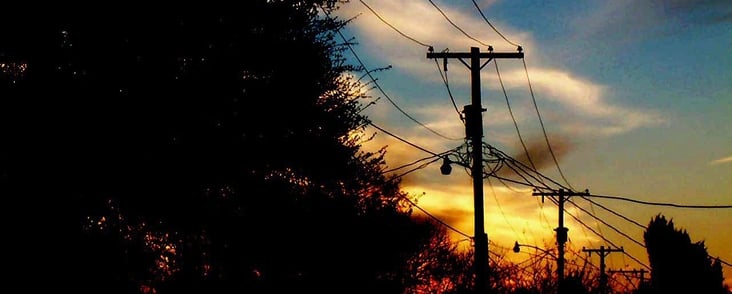
While supporters and opponents of the Clean Power Plan (CPP) await a decision from the D.C. Circuit Court on the merits of the rule, work continues on the Clean Energy Incentive Program (CEIP), a voluntary early action program that would reward certain renewable energy and energy efficiency measures in the years leading up to the start of the CPP compliance period. AEE submitted comments on the CEIP last week, in advance of the November 1 comment deadline, and not for the first time. In these latest comments, AEE urged EPA to issue credits sooner, expand project eligibility, increase certainty that all early action credits will be available, and ensure a smooth transition to the compliance period beginning in 2022. These suggestions are all in the interest of making the program more effective in jump-starting CPP compliance and putting advanced energy to work for states, communities, and households.
If you’re thinking, “Wait, didn’t AEE already submit comments on the CEIP a year ago,” you would be correct. AEE submitted comments on the CEIP as part of a non-regulatory docket last December, then again as part of the proposed federal plan and model trading rule docket, which closed this past January.
The latest comment period opened when EPA released a revised CEIP proposal in June. When that proposal came out, we published a rundown of what changed for the better, for the worse, or not at all. As that blog post and our latest comments make clear, there are some things we like about the revised program proposal—but it still needs work if it’s going to make good on on its intended impacts. Given that the aim of the program is to accelerate deployment of advanced energy and prepare states to meet their CPP targets, we’ll all be better off if it does deliver fully on its goals.
“The Clean Energy Incentive Program has the potential to deliver millions of dollars of benefits to states and low-income communities, but without adjustments in the program, reality may not live up to expectations,” said Malcolm Woolf, Senior Vice President of Policy and Government Affairs, in our press release. “In our comments, we identify for EPA simple changes that could boost participation and ensure that states, communities, and households get the maximum benefit of energy efficiency and renewable energy investments made before 2022.”
In particular, AEE’s comments focus on maximizing the benefits of the CEIP by making adjustments that are aligned with three overarching objectives.
First, EPA should increase certainty wherever possible. Increased certainty will give states a clear pathway to participate, provide a means for utilities and other owners or operators of power plants to benefit from the program, and ensure that renewable energy and energy efficiency providers are able to make use of the CEIP. Providing greater certainty around the timing, price, and availability of allowances and emission-reduction credits (ERCs) under the CEIP will increase participation and lead to better outcomes. AEE’s recommended changes to the timing of the CEIP, including bringing the crediting period forward to 2019, extending the crediting period to three years, and allowing a “grace period” for development of renewable energy projects (much like the “ramp-up” period allowed for energy efficiency investments), would provide a clearer and stronger market signal. AEE also suggests clarifications to certain eligibility requirements, state plan considerations, and evaluation, measurement, and verification requirements to ensure maximum benefits. In addition, a more flexible definition of what would “benefit a state” would give more assurance to renewable energy and energy efficiency providers that their projects will be eligible.
Second, EPA should also bolster the potential value of participation such that states, utilities, renewable energy and energy efficiency providers, and other stakeholders make full use of the program. Quite simply, the higher the likelihood that all available matching allowances and ERCs will be “unlocked” and distributed to eligible projects and programs, the greater the incentive for states to participate and capture that value. Similarly, higher potential to earn credits will spur greater participation by renewable energy and energy efficiency providers in proposing projects. AEE makes several recommendations to increase the value of participation, such as lengthening the crediting period, expanding eligibility to include non-low income energy efficiency (on a single-credit basis, rather than double credit offered for energy efficiency investments in low-income communities), providing a means for reapportioning credits from states not participating in the program, and allowing projects eligible for the production tax credit (PTC) and investment tax credit (ITC) to participate in the CEIP.
Third, EPA should aim to ease the requirements for participation without undermining the integrity of the program, providing for a smoother start to the CEIP as well as a smoother transition from the CEIP to the CPP. For example, allowing a “grace period” for renewable energy projects and lengthening the CEIP crediting period would avoid bottlenecks and provide additional flexibility. Similarly, additional flexibility around certain project and program eligibility requirements, such as the definition of “low-income community” and the definition of “benefit a state” would ease the eligibility process and enable greater participation. AEE also recommends leveraging the administrative work of CEIP project approval to ease the transition into the CPP. Finally, AEE supports the use of third-party entities to help “beyond-the-fence-line” technologies participate and compete in both the CEIP and CPP—a topic we covered on Advanced Energy Perspectives a few weeks ago.
AEE’s comments include much more detail on changes that will contribute to these three overarching objectives, but the specifics of our recommended revisions boil down to a single truth: If EPA creates an early action program that is both straightforward and attractive, the advanced energy industry will deliver the projects that states and ratepayers need to hit CPP targets quickly, easily, and affordably. It’s that simple.
Keep up-to-date on all advanced energy policy news by subscribing to AEE Weekly, available for free below:
Featured image courtesy of Eli Braud and used under a Creative Commons license.
